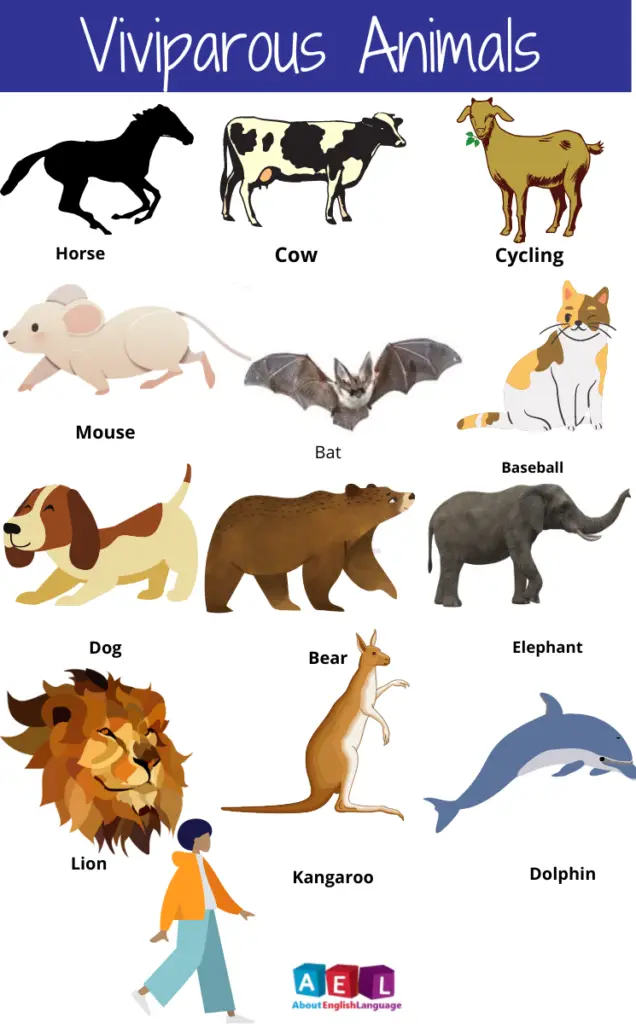Here in this topic, Viviparous Animals we discuss all the viviparous animals with a complete list of pictures and detail about them.
Viviparous Animals:
The term viviparous refers to animals that give birth to live young. As opposed to laying eggs or using some other type of reproduction method. A number of mammals and reptiles are viviparous

When most people think of animals that give birth to live young, they often consider mammals and birds as the primary examples. In truth, however, there are several other kinds of animals that fall into this category.
This kind of birth typically occurs in mammals and only about 5% of all mammal species are considered viviparous, although it occurs in some fish, amphibians, reptiles, mollusks, and insects too.
There are approximately 7,000 species of mammals on earth, and many of them don’t lay eggs; they give birth to live young.
These mammals are called viviparous animals, and they’re found in every corner of the globe (even some parts of the ocean) and range in size from tiny shrews to massive whales.
List of Viviparous Animals:
- Horse
- Cow
- Mouse
- Bat
- Cat
- Dog
- Elephant
- Goat
- Bear
- Lion
- Kangaroo
- Dolphin
- Rabbit
- Deer
- Tiger
- Fox
- Wolf
- Jackal
- Giraffe
- Monkey
- Zebra
- Donkey
- Sharks
- Rattle Snakes
Viviparous Animals with Pictures and Details:
Rattle Snakes:
Although most rattlesnakes are venomous, not all are. It is common for some to give birth to live young as opposed to laying eggs.
It may sound unusual, but when people living in the hot desert of Arizona went through a period of lack of rainfall during the summer of 1942, they discovered something surprising: no rattlesnake hatchlings. So they investigated and discovered a particular type of snake resistant to heat and droughts that have babies born live instead of in eggs.
Sharks:
Although sharks are not as cuddly as other types of animals, there is no denying that they are one of nature’s most powerful predators.
However, some species have adapted to ensure their survival in the water—giving birth to live young rather than laying eggs like most fish.
Zebra:
The word ‘viviparous’ can be applied to zebra because they give birth to living young. usually taking around two weeks to have the strength to lead their offspring along as they venture about their regular routine.
In groups, zebras are known as a herd, and a male zebra who lacks a harem of females is called a bachelor.
Tiger:
The tiger, otherwise known as Panthera tigris or panther, is the largest living feline, with a habitat that extends from sub-Saharan Africa to southeastern Asia.
They have been found in a number of environments such as swamps, grasslands, tropical rainforests, and deserts. Habitat loss and poaching for their body parts have left the tiger as an endangered species. they give birth to living young
Kangaroo:
Kangaroos give birth to one baby after a gestation period of about 35 days. When it is born, the baby can weigh about 12-19 grams (0.45-0.68 ounces).
Giraffe:
Female giraffes are what zoologists call viviparous—they give birth to live young instead of laying eggs. In fact, giraffes have one of the longest gestation periods of any mammals: 14 months. That’s quite unusual when you consider the enormous birth rates of many other animals. Read More
